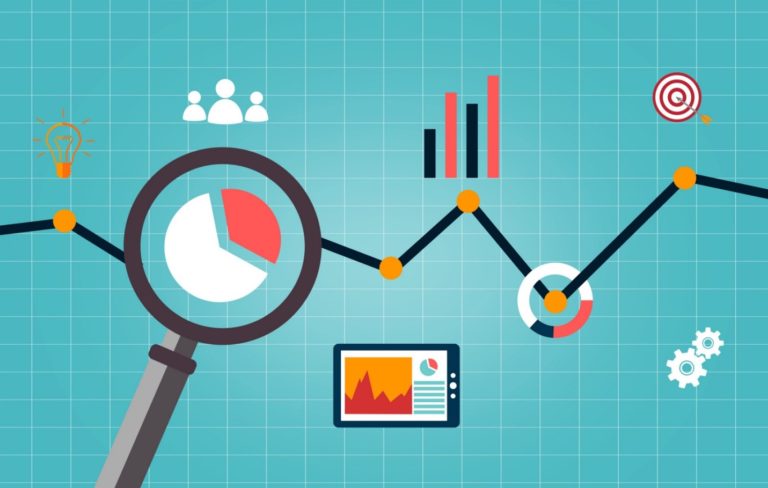Over the past few years, there has been a proliferation of analytical tools to help organizations measure their digital marketing campaigns’ performance. However, this task often focuses on interpreting and collecting many of these results superficially without analyzing the data in-depth. As data analysis tools become more complex, it will be necessary to deepen learning and, possibly, increase formal training, to fully understand web analytics and achieve a correct interpretation of the available information.
So, How to Interpret Data Strategically?

The data analysis is often done relatively superficially, not necessarily because there is no real analysis capacity of the team that obtains these results. Many times, there is an excellent focus on looking for data with excessively strange values or fluctuations. Not too much attention is paid to other data that could reveal additional relevant information or even explain other securities’ aggressive movements. It is necessary to strategically and holistically approach data analysis to see beyond the obvious and extract correct interpretations from them. That’s why the following aspects should be considered:
#1. Set Goals for the Strategy
The measurement of different parts of a campaign or the business’s behaviour on the web must always respond to some strategic objectives that must be raised in advance. In this sense, establishing these objectives will establish which aspects should be measured to develop key performance indicators (or KPIs, for its acronym in English) that we must collect through the different tools available. That will allow you to measure what needs to be measured and avoid emphasizing information that may be irrelevant to the business.
#2. Understand the Business and Do Strategic Analysis
The business model, audience, industry, and even geographic area where an organization operates will largely determine which information is relevant and overlooked.
In this sense, to the extent that the amount of information available increases, as more tools become available and each one achieves a greater degree of sophistication, determining where to focus our gaze is almost as decisive as having the information itself. Being clear about the KPIs and what other metrics could impact these key indicators can be an excellent way to reduce the amount of data to analyze and consider enough to make an in-depth interpretation.
#3. Perform an Objective Analysis of the Data

Once the relevant parameters are determined, it is always advisable to perform an objective analysis of the data. By focusing more on data that seems favourable and overshadowing or even suppressing information that does not seem so promising, sales or marketing managers often want to demonstrate – consciously or unconsciously – that their strategy is effective and their targets are being met. Such behaviour typically occurs more often when a third party conducts the marketing or sales.
Analysis of the data is carried out to determine the functionality of things accurately. This data could often improve a strategy or even correct small flaws in a process that could affect its success. For example, an email marketing campaign with high email open rates and an abrupt increase in subscribers may not be achieving many clicks to the company’s website. In this situation, presenting these numbers together and not focusing only on positive ones could improve the overall strategy, even identifying small defects. There is no traffic to the page simply because the link or button placed in the email has a fault.
#4. Do a Joint Analysis of Multiple Data

Just as thermal sensation in a particular location is determined by temperature and other factors such as humidity, wind speed, and other aspects, analyzing a company’s data must also consider multiple factors to make a reasonable interpretation. Naturally, specific figures can, by themselves, provide a lot of information, but seeing their relationship with others is what you can really achieve to reach correct conclusions with a high level of reliability.
Similarly, trying to compare the behaviour of different indicators over time can allow us to see trends. That will enable us to see the evolution of a variable over time and even detect easily discernible patterns over time. For example, the seasonality of sales of a specific product, or to check more precisely whether a particular action has been undertaken – such as the launch of a new marketing campaign – has a particular impact. Besides, trend analysis can help detect correlations between variables that may not have been considered related.
Proper interpretation of digital analytics results involves trying to understand the context in which the data studied occurs. Also, an analysis of the information should always be attempted considering the evolution of each variable and its possible interaction with others to reach conclusions that could significantly value organizations.
With the marketing world being constantly flooded with increasing amounts of data, it is difficult for a marketer to interpret reports accurately. Knowledge of linguistics will help managers but will not give them experience in data collection and processing. With a digital content management system, you can better prepare sales, access sales tools to participate more effectively, learn more about your audience through analysis, and ultimately close more applications.
With Synepsis Consulting‘s digital content management solution, you can directly and intuitively find, present and track your content and any other interaction with your customers from a single place.

